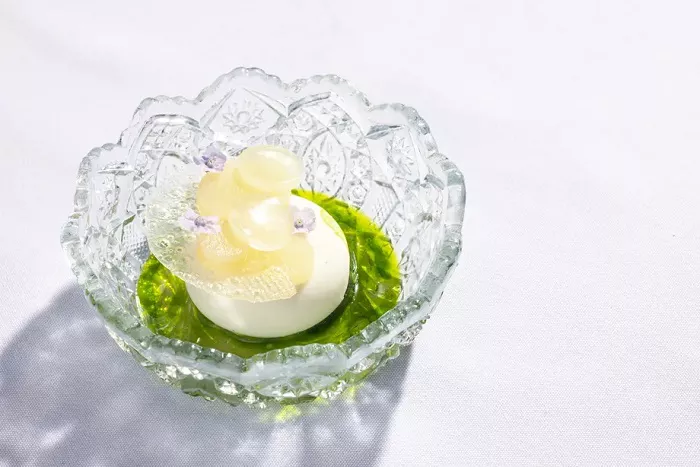In the face of economic uncertainty, San Francisco chefs are increasingly turning to ice cream, gelato, and sorbet, a trend that’s sweeping across Bay Area dining. From upscale restaurants to small-scale pop-ups, this frozen dessert has become a creative outlet for chefs navigating rising costs and labor challenges.
At Brucato Amaro, a liqueur-centric restaurant on South Van Ness Avenue, ice cream is paired with the distillery’s signature amaro. Flavours like Mexican-spiced chocolate, burnt honey, and preserved lemon sorbet are part of a growing trend in the city, as chefs seek innovative ways to captivate their customers. “Ice cream is everywhere right now,” says one industry observer, noting its rise alongside upscale dining in San Francisco.
Serena Chow Fisher’s Jack & Remi ice cream, which debuted in 2023, quickly garnered attention, contributing to what the San Francisco Chronicle dubbed a “wave of upscale ice cream.” Other notable entries in this sweet surge include Jennifer Felton’s Gelateria di Cotogna, set to open in 2024, and Angie’s Pizza, which offers inventive flavours like banana and triple chocolate malt ice cream. Chefs like Heena Patel at Besharam and Matthew Accarrino at Mattina also explore creative ice cream offerings, such as gulab jamun and walnut baklava gelato, respectively.
Despite the apparent glamour of these new dessert ventures, the widespread affection for ice cream may have deeper economic roots. In times of economic strain, familiar and comforting foods like ice cream thrive, providing chefs with an accessible and versatile dessert option. As Eater’s Jaya Saxena pointed out, when economies falter, simple yet delightful dishes like ice cream offer a balance of affordability and culinary creativity.
Ellie Estrada-Londo, pastry chef at Nisei, believes that ice cream has become a reliable menu item during tough times. “It’s shelf-stable, and it makes sense to have on the menu,” she explains. “It’s a safe bet in a world where desserts can be a harder sell.” In addition to its practicality, ice cream offers a platform for showcasing California’s bounty of seasonal, locally sourced ingredients—another trend that resonates with diners’ increasing demand for sustainable dining.
Max Blachman-Gentile, chef-owner of Jules, a popular pizza pop-up, sees ice cream as a low-labor yet highly creative endeavor. His $1,200 Musso Pola freezer-mixer allows him to craft small-batch sorbets and ice creams without investing in expensive equipment. This makes it easier to experiment with flavours while managing labor costs—important in a city where overhead can be steep. Blachman-Gentile’s ice cream also embraces sustainability, with ingredients like leftover buttermilk from his in-house butter-making process turned into a tangy vanilla buttermilk ice cream.
The trend also helps mitigate rising food costs, especially in a volatile market. Michelle Hernandez, owner of Le Dix-Sept bakery, saw the cost of eggs surge dramatically over the past few years, making some dessert options less viable. But ice cream allows for greater flexibility in ingredient use. For example, egg whites are incorporated into bar drinks, while the yolks find a new life in ice cream bases.
Chip King, chef at Brucato Amaro, shares this approach, focusing on hyperlocal ingredients, such as honey from the restaurant’s rooftop apiary, to create cost-effective yet innovative ice cream flavours. King’s $7 ice cream tasting features two scoops topped with amaro, offering customers a unique and affordable indulgence. For him, the economic benefits are clear: ice cream is a versatile, low-risk product that provides both creativity and financial stability.
As these chefs continue to explore the potential of ice cream, many see it not just as a menu item but also a path to greater financial flexibility. “Selling pints is definitely on the table,” says Blachman-Gentile, hinting at the possibility of retail ice cream sales down the line. For now, the sweet success of ice cream in San Francisco serves as a testament to its ability to offer both comfort and creative potential in an increasingly unpredictable culinary landscape.
Related topics


